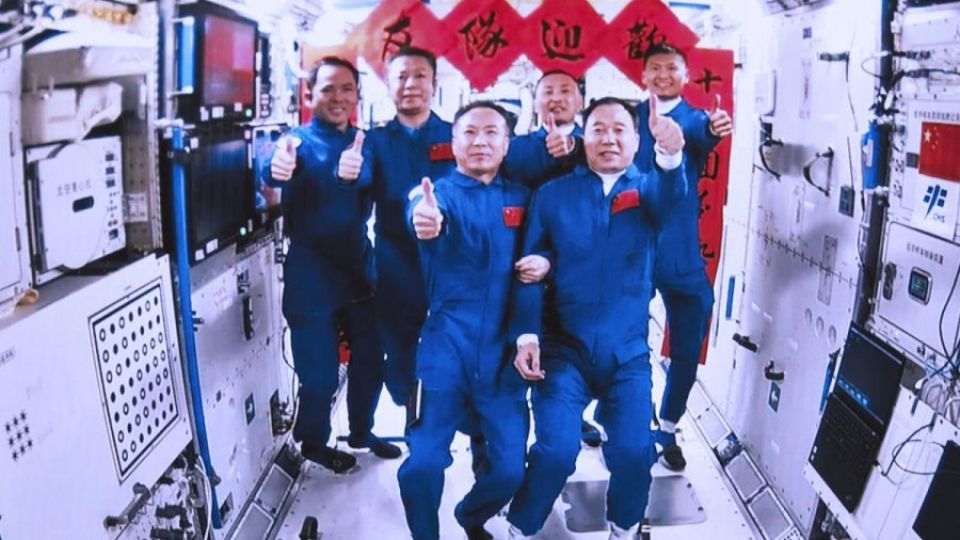The first Chinese citizen astronaut is part of the Shenzhou XVI mission crew, who arrived in orbit on Tuesday and began operating at the Tiangong space station.
Major General Jing Haipeng, the mission’s commander, Colonel Zhu Yangzhu, the spacecraft’s flight engineer, and Professor Gui Haichao, the mission’s science payload specialist and the first Chinese civilian in space, were all launched aboard the Shenzhou XVI spacecraft by a 20-story-tall Long March 2F carrier rocket from the Jiuquan Satellite Launch Centre in northwest China’s Gobi Desert at 9:31 a.m.
The 8-metric-ton spacecraft took a brief flight before being placed into a low-Earth orbit 400 kilometres above the earth. It then switched on the quick rendezvous-docking mode and began its approach to the Tiangong station.
The spacecraft made a connection with the Tianhe core module of Tiangong on Tuesday in the late afternoon.
At 6:19 p.m., Jing opened a hatch aboard the Shenzhou XVI spaceship and floated into Tianhe’s connection cabin after almost two hours of preparation work after the docking.
He was greeted inside the cabin by Major General Fei Junlong, the captain of the Shenzhou XV crew.
Let’s embrace! I am overjoyed. Fei remarked as he hugged Jing.
Jing was the first to enter the connection cabin, followed by Zhu and Gui, who were welcomed and hugged by Fei.
The Shenzhou XVI trio then entered the Tianhe module and hugged the Senior Colonel Deng Qingming and Senior Colonel Zhang Lu of the Shenzhou XV crew.
Jing and his crew will spend around five months in Tiangong before departing for Earth in November. According to Lin Xiqiang, deputy director of the China Manned Space Agency, they will conduct many spacewalks throughout the mission to place equipment outside the station and do maintenance work.
According to Lin, additional significant responsibilities will include assisting with the docking and departure of guest spacecraft including freight ships and a space-based telescope, carrying out scientific experiments and technological displays, and presenting science lectures.
The official stated that he anticipates that the Shenzhou Conference would yield new scientific information in a variety of research areas, including general relativity and the origins of life.
The trip marks the third generation of Chinese astronauts’ maiden voyage and the first space flight by a Chinese citizen.
While Gui is a doctorate advisor at the Department of Spacecraft and Launch Vehicle Technology of Beihang University’s School of Astronautics in Beijing, Jing and Zhu are soldiers in the People’s Liberation Army’s Astronaut Division.
All of the third generation astronauts, according to Lin, have successfully completed rigorous training and have been given the all-clear to launch into space.
Jing is the most seasoned astronaut in China and will make his fourth space voyage on the Shenzhou XVI mission.
Lin claims that China now has everything necessary to send foreign astronauts into space, including a well-built space station, a dependable astronaut transportation system, and established techniques for astronaut training and deployment.
On this issue, we are now working hard. I warmly welcome and anticipate the arrival of international astronauts aboard our space station, he said.
The Tianhe core module, the Wentian and Mengtian science lab modules, and the Tianzhou 6 cargo ship are the current three main parts of Tiangong, one of the largest and most technologically advanced spacecraft in the world. Tiangong is also connected to three visiting vessels, the Shenzhou XV, Shenzhou XVI, and the Tianzhou 6 crew craft.















